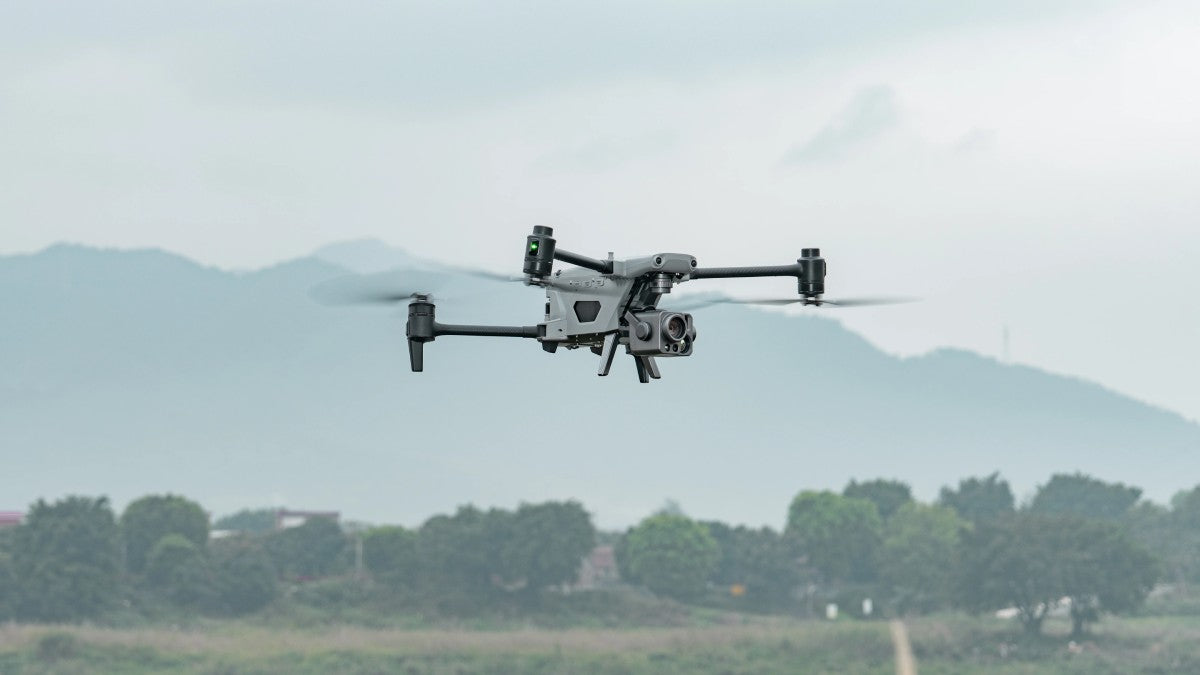In the field of modern aviation, helicopters and drones each have unique advantages and play an important role in different scenarios. Whether it is the symbol of traditional aviation - helicopters, or the emerging technological product - drones, they have significant differences in design, use and application.
The future development of the aviation industry is inseparable from helicopters, drones, air taxis, and manned aircraft, and low-altitude economy has become a new trend. Here we make a detailed comparison of helicopters and drones, and combine actual scenarios to help you understand their advantages and disadvantages.

Helicopters vs. drones: Definition and basic structure
Helicopters: A manned rotorcraft that relies on the main rotor and tail rotor to provide lift and directional control.
Drones: Aircraft that does not require onboard personnel to operate, usually operated by remote control or autonomous navigation systems.
Helicopter vs. UAV: Performance Comparison
| Features | Helicopter | UAV Drone |
| Payload | Can reach hundreds of kilograms to several tons | Usually 1-10 kilograms, some enterprise-level can reach 20-30 kilograms |
| Flight time | 2-4 hours | 30-60 minutes |
| Flight range | Hundreds of kilometers | 10-20 kilometers |
| Speed | 200-300 kilometers/hour | 20-100 kilometers/hour |
| Wind resistance | Strong, 8-10 wind resistance | Strong, 8-10 wind resistance |
Summary: Based on the above characteristics, helicopters have advantages in load and endurance, and are suitable for long-distance and long-term missions; drones are lighter and of many types, ranging from low-cost to high-end, and are suitable for short-term, economical and concealed missions or long-distance unmanned missions.
Helicopters vs. drones: cost and maintenance
Helicopters
Purchase cost: millions to tens of millions of dollars (e.g., UH-60 is about $20 million).
Maintenance cost: high, requires a professional team, and the operating cost per hour can reach thousands of dollars, including fuel and parts replacement.
Staff requirements: pilots, mechanics, etc. are required, and labor costs are high.
Drones
Purchase cost: thousands to tens of thousands of dollars (e.g., Autel EVO II 640T is about $5,299).
Maintenance cost: low, mainly replacing batteries or sensors, with an hourly cost of about $10-50.
Staff requirements: only one operator is required, and some tasks can be performed automatically.
Analysis: The initial investment and operating costs of drones are much lower than those of helicopters, and they are suitable for industrial monitoring projects with limited budgets.
Helicopters vs. drones: Application scenarios
Helicopters
Rescue and transportation: transporting wounded or supplies in disasters (such as earthquake relief).
Military missions: performing reconnaissance, attack, or transportation.
Long-distance patrol: border or maritime monitoring, long-term flight is required.
Limitations: cannot enter narrow spaces, high risk.
Drones
Industrial monitoring: Autel EVO Max 4T's thermal imaging and AI technology are suitable for oil and gas pipeline and power inspections, and operate 24/7.
Agricultural management: spraying pesticides or monitoring crop health.
Public safety: provide real-time data at the scene of the accident and avoid dangerous areas.
Limitations: endurance and load limits, not suitable for long-distance or heavy-load tasks.
Helicopters vs. drones: Safety and compliance
Helicopters
Manned, strict pilot training is required, and accident risks involve casualties.
Subject to aviation control, flight permits must be applied for, and the process is complicated.
Drones
No risk to personnel, but drone regulations must be followed (such as the FAA 120-meter height limit).
Autel was blacklisted by the United States in 2024, and data security has attracted much attention. It is recommended to operate offline.
Analysis: Drones are safer in low-risk scenarios, but compliance requirements increase.
Helicopters vs. drones: Future trends
Helicopters: Transform to electrification and unmanned, combined with AI technology.
Drones: Improved endurance and load capacity (such as hydrogen fuel cell drones), and remote control through integration with 5G.
Integration trend: Some companies explore "man-unmanned hybrid mode", such as helicopters carrying drones to work together.
Helicopters and drones complement each other in the future development of the aviation industry. They are an important force that cannot be ignored for the development and construction of intensive aerial operations and low-altitude economy in the future.
Summary
Helicopters are known for their load capacity, endurance and speed, and are suitable for rescue and military missions; drones win with low cost, flexibility and intelligence, especially in industrial monitoring. Which tool to choose depends on the mission requirements: if long-distance heavy load is required, helicopters are the first choice; if short-term high-frequency monitoring is required, Autel drones are a more cost-effective solution.








